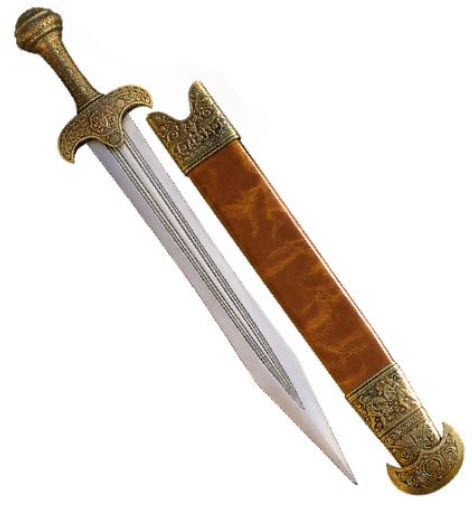Contents
When Celtic warriors became auxiliaries for the imperial cavalry in the early imperial period, they continued to use their Celtic long swords, which were 60 – 85 cm long. This is how this type of sword was introduced to the Roman army. In the late second century AD, the Roman heavy infantry began to replace the gladius swords with spathae modeled after the Celtic long swords, relegating the gladius to a weapon or light infantry. This transition did not happen over night; it was a gradual process that continued throughout the third century. The reason for exchanging the gladius for the spatha was probably to give the heavy infantry more reach when thrusting.
Configuration
- Style: Straight
- Length: 75 cm – 100 cm
- Point: Long point for infantry, rounded tip for cavalry (to avoid accidental stabbing of ones own horse or foot)
When?
The oldest known spathae are from the 1st century AD.
Spathae were used well into the 6th century AD, which mean that they were used even after the split of the Roman Empire into a Western and Eastern part in 395 AD, and after the collapse of West Rome in 476 AD. East Rome, eventually known as the Byzantine Empire, continued to outfit their army with spathae, and spatharios (bearer of the spatha) was a court title used for certain mid-level officials.
In 1858, a cache containing 90 swords were discovered in the bog Nydam Mose in Denmark. All of them are shaped like spathae and have been classified by archaeologists as Roman swords dating from the 3rd and 4th century AD.
There are strong similarities between the spatha and certain later European swords, such as the Carolingian-era sword, also known as the Viking Age sword. This sword was developed in the 8th century from Frankish-made Merovingian swords, which in turn were derived from the spatha. The Carolingian-era sword would eventually develop into the knightly sword typical of the European High Middle Ages.
Etymology
The word spatha is derived from the Greek spáthe (σπάθη), a term that denoted any broad blade. In English, we can see the same root forming the words spade and spatula.
In the imperial period, the Latin-speaking Roman originally used the word spatha pretty much like the Greek, i.e. it was used as a name for any object considered flat and elongated. The earliest instance that we know of where the name spatha is used as name of a sword is from a text written by the senator and historian Tacitus (c. 56 – c. 120 AD). In this text, Tacitus talks about an incident that supposedly occurred in the days of the early empire, where a the British king named Caractacus got trapped in a spot where he was facing the gladii of the legionaries in one direction and the spathae of the auxiliaries in the other.
